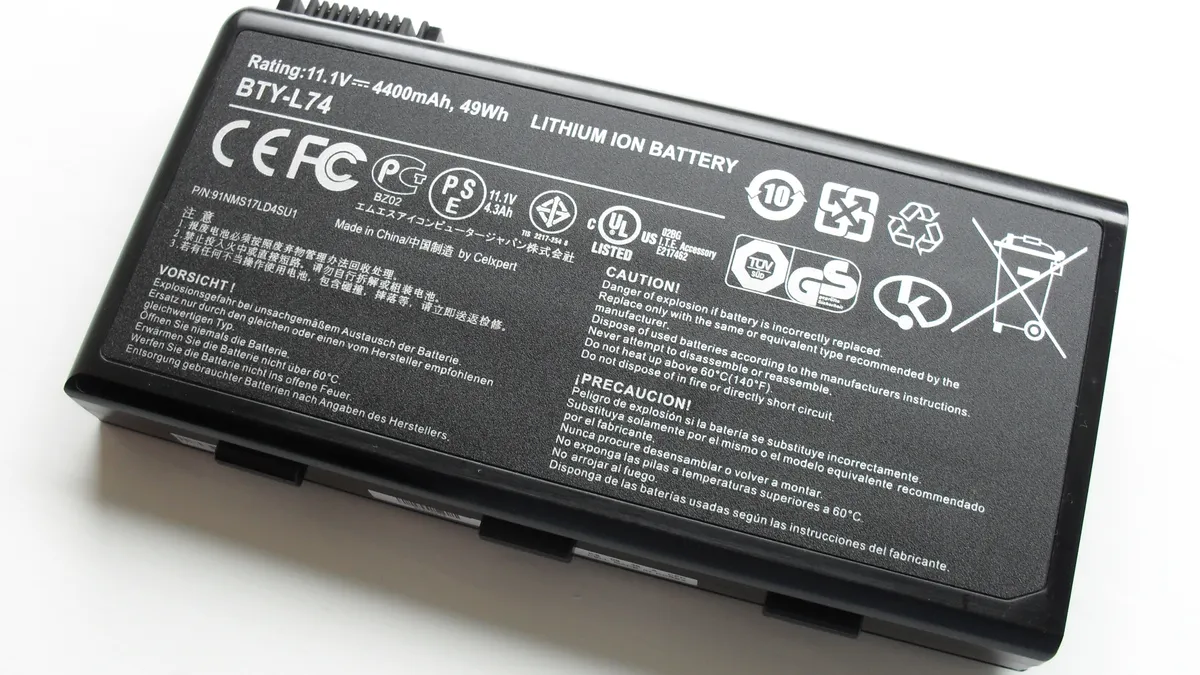Dive Brief:
- Battery makers are facing a shortage of lithium, and ongoing financial problems in markets suppressed by the COVID-19 pandemic, according to industry insiders at an Atlantic Council panel on Wednesday.
- Shortages of lithium specialty chemicals are expected by the mid-2020's, "given the current pace of supply development," Vivas Kumar, a principal consultant with Benchmark Mineral Intelligence and former senior manager for Tesla’s battery supply chain, said on the panel.
- Lithium-ion batteries have been taking off due to the ease of availability, high energy density of the batteries and their longer discharge cycles, according to James Frith, head of energy storage at BloombergNEF. "If you have a higher energy density you have a higher throughput of more gigawatt hours," he said during the "Beyond lithium-ion: Charging into the future" discussion hosted by Atlantic Council's Global Energy and Geotech Centers.
Dive Insight:
Despite material shortages, lithium-ion markets are taking off and supply problems will not result from a shortage of lithium raw materials, panelists said.
“What matters is the production of a high-purity, high-quality chemical that can be used in battery manufacturing,” Kumar said. “The number of companies that can produce a large volume of these high-purity chemicals is very small and they are constantly capital-constrained."
The build-out of supply chains is critical all while the energy storage industry is grappling with the adverse impacts to financial markets from COVID-19.
"Anyone, a battery company included, has got to admit that raising capital going forward is going to be a challenge," Doug Campbell, chief executive officer at Solid Power, said on the panel.
Governments have an important role to play in fostering investment and setting industrial policy to build out America’s supply chain of battery materials, say experts.
Government officials have come to recognize the importance of battery manufacturing for the future of the automotive industry, energy storage, and grid-scale utilities, according to Kumar. Before batteries can go into vehicles or energy storage systems, however, the supply chain relies upon suppliers in capital-intensive industries – mining and specialty chemicals manufacturing.
The U.S. has once again become dependent on foreign sources of energy as China has grown a robust specialty chemicals manufacturing industry, according to Kumar. U.S. government support for specialty chemicals could yield plenty of high-paying, highly skilled jobs.
China’s development of lithium-ion battery manufacturing also has outstripped development in the United States, Simon Moores, Benchmark’s managing director, said June 24 in testimony before the Senate Committee on Energy and Natural Resources. China launched a program to open 46 megafactories between April of 2019 and April 2020 to produce lithium-ion batteries for vehicles and energy storage versus three in the U.S. during the same period.
The desire both for vehicle electrification and energy storage in a cleaner power sector has not been diminished by the pandemic, according to Jacqui Murray, deputy director of Innovate UK’s Faraday Battery Challenge, a government fund to invest in the development of new battery technologies.
“I saw that the Tesla Model 3 was the biggest-selling car in the U.K. in May and that’s against all the internal combustion engines,” despite pandemic-related drops in gasoline and diesel prices, Murray said.
Before the pandemic, car companies had fully committed to vehicle electrification to support hitting carbon reduction targets set by governments, Murray said.
“We also noticed a global trend of battery manufacturers moving closer to the car companies.”
Delivering new battery technologies involves a long research and development process, panelists said.
“The nature of battery development is quite bespoke, very complex,” Murray said. The better understanding governments have of battery development and manufacturing, the better their interventions will be, according to Murray.
“Any time you’re developing a new battery chemistry, that is hard, hard work. I don’t want to trivialize how much effort goes into developing a chemistry to meet requirements,” Campbell said.
Despite disruptions in production and capital markets caused by the COVID-19 pandemic, interest in vehicle electrification remains strong, according to Campbell.
“You cannot overcome the momentum toward vehicle electrification. It’s going to happen,” he said. “Our stakeholders have not wavered on their vision of vehicle electrification and the need for advanced battery technology. Our stakeholders are still engaged despite the financial constraints."














